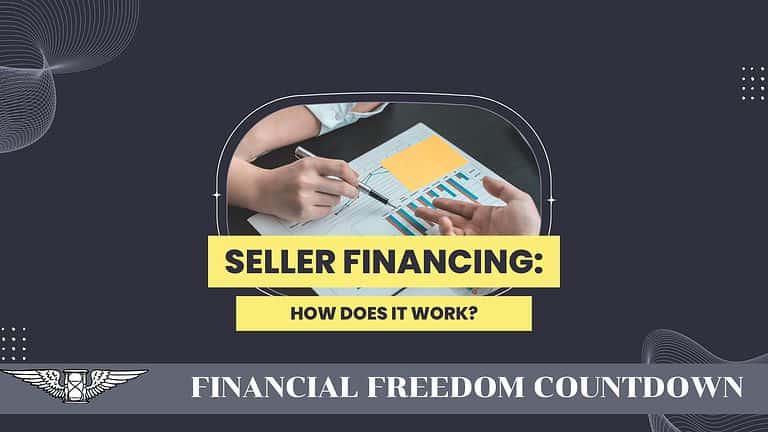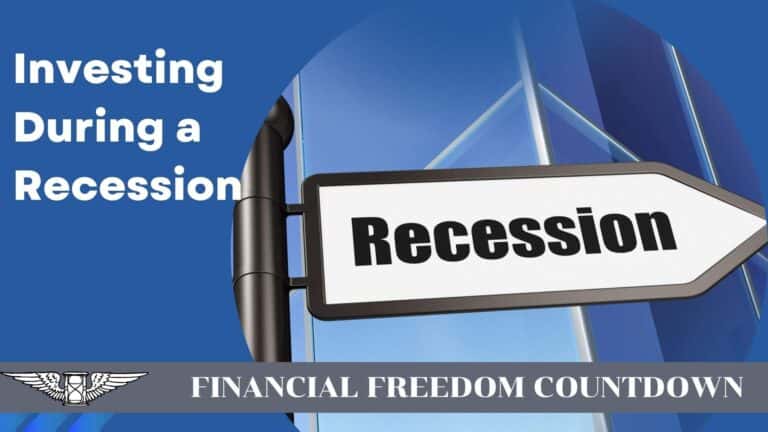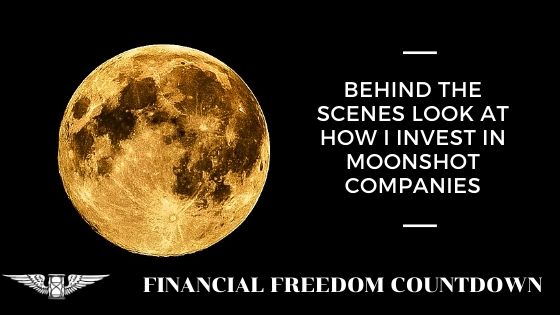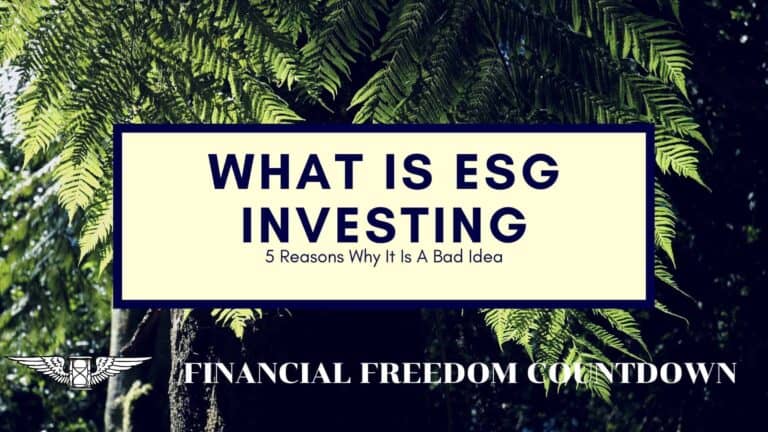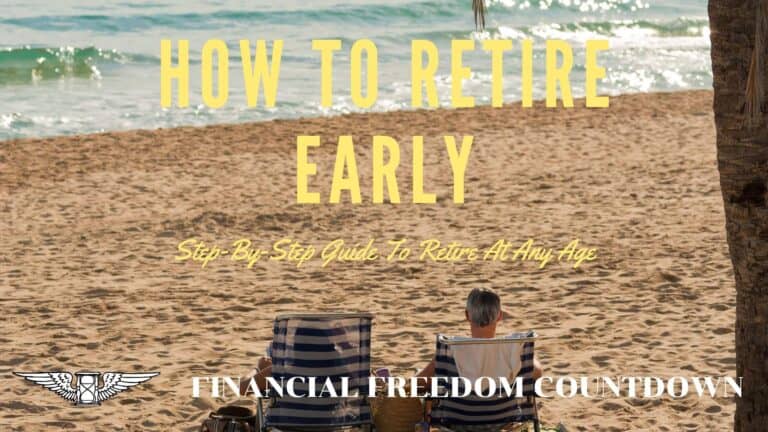14 Best Short-Term Investments for 5 years or less
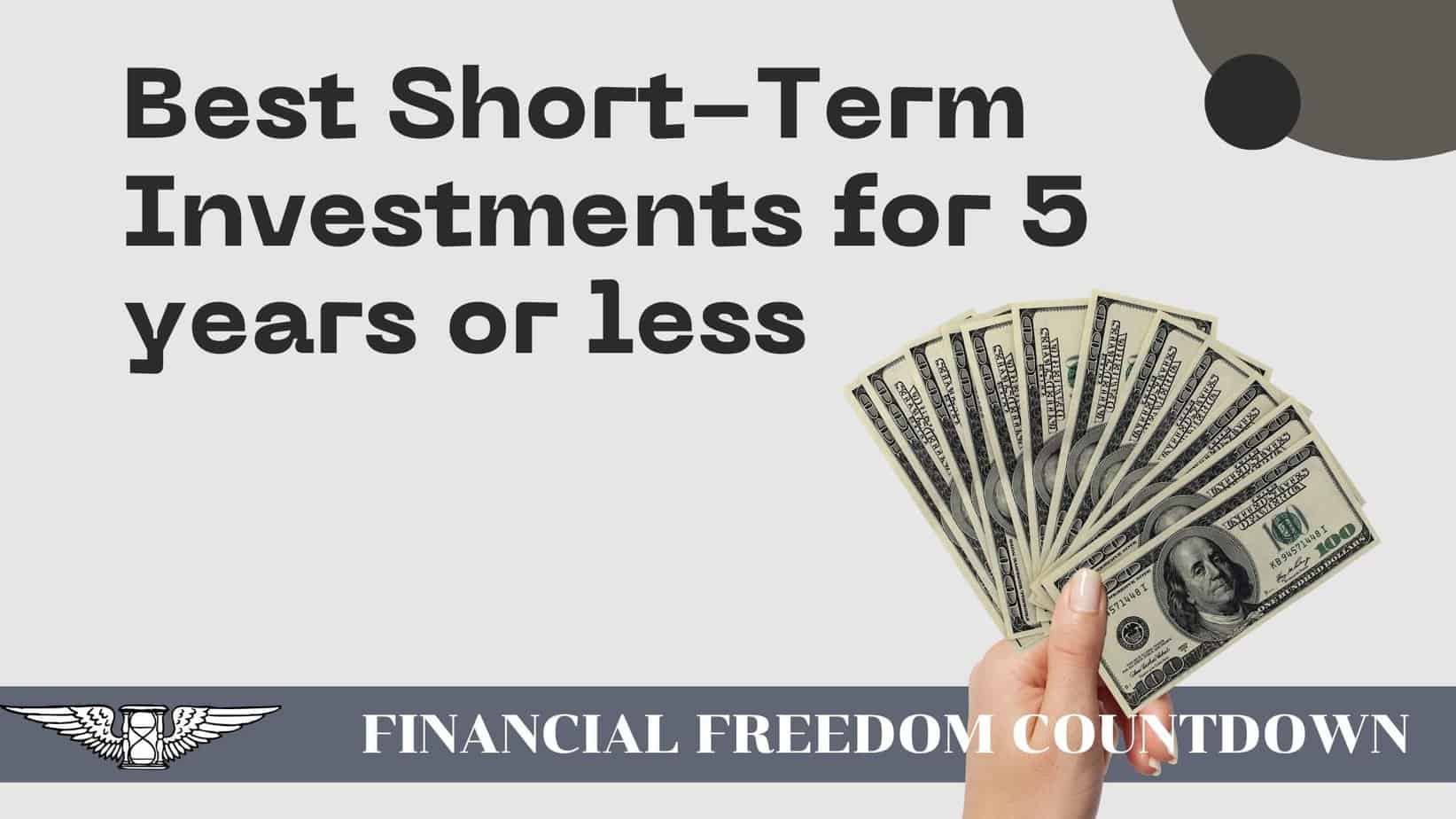
Most of us believe that investing should be for long-term goals. But there are many reasons for short-term investments depending on your financial goals.
Inflation is a killer of cash. Hence even money needed for the short-term should be invested. In everyone’s portfolio, there should be both short-term investments and long-term investments. Investors must choose which short-term investments fit their goals the best.
The Difference Between Long-Term Investments and Short-Term Investments
Long-term investments are bought and held for five years or longer, usually much longer. A long-term investment is best suited for long-term financial goals like college and retirement funds.
Investors use long-term investing if they have several years before they need the money. Because of the long time before the money is expected to be required, one can take more risks with long-term investments.
Although stocks outperform in the long run, investing in the S&P 500 involves volatility. If the stock market drops for a couple of years, the long-term investors know they have time to make up for any losses.
Investing money in short-term investments is money that is expected to be needed within the next three years to five years. Since one will need the cash in short-term investments sooner, it is wise to invest in fixed-income investments that do not risk losing money. Stocks are just too volatile and risky to use for a short-term investment.
Short-term investments are best for those with plans for their money soon and cannot risk losing any money in the account. Some short-term goals can include:
- Weddings: If a child is expected to get married within the next three years, a short-term investment account is the best place for this money.
- Vacations: Using short-term investments to fund a holiday is much better than paying for a break with a credit card unless it is a strategic move to obtain credit card rewards.
- Home improvements: Those planning to remodel their homes use short-term investments to save money for home improvements.
- Down payment: If you’re saving money for a down payment on a house, short-term investing is a safe place to save for this financial goal. Of course, depending on the economic conditions, one may wonder if it is a good time to buy a house.
- Gifts: Another reason for these accounts is to save to buy gifts for upcoming holidays, birthdays, graduations, or other special events.
- Parking money: Short-term investments are a great place to park money you plan to use later for other investments when the time is right.
- An emergency fund: Another reason for a safe short-term investment is to save for emergencies. A rule of thumb states that everyone should save enough in an emergency fund to live three to six months.
What To Look For in a Short-Term Investment
An excellent short-term investment should never lose money, and it should not keep you awake at night worrying about it. A short-term investment must have the following:
- Liquidity: The money invested in a short-term account must be readily accessible so one can sell it at any time.
- Stability: It has to have a low risk to no risk of losing money over the short term. Stocks are too volatile to be considered stable enough for short-term investments.
- Low transaction costs: Investors shouldn’t have to pay high commissions or fees to access their short-term investments when it comes time to sell. Look for meager costs or no costs to buy or sell.
There are numerous types of accounts you can open for short-term investments. Some will depend on your risk tolerance. If your risk tolerance is very low, saving your money in a savings account will be best. There is always some risk, but it is so low in some of these accounts that it’s not worth mentioning.
Best Short-Term Investments
Savings Account
One can open a savings account at a bank or a credit union, or you can have a brokerage account. There is practically no risk of losing money in savings accounts. Savings accounts opened at a bank or a brokerage account are insured by the Federal Deposit Insurance Corporation (FDIC) from theft, fraud, or if the financial institution goes bankrupt. You cannot lose your money. The Federal Deposit Insurance Corporation is an independent agency of the federal government.
If you open a savings account at a credit union, it is insured by the National Credit Union Administration (NCUA). The money in savings accounts at these financial institutions is insured for up to $250,000 per account owner, per institution, and per ownership type.
Most people might not consider savings accounts a short-term investment, but they are. What makes them an investment is that investors will earn money with a savings account. Even though the interest paid on a savings account isn’t very much, especially in a low-interest rate environment, it is still something.
As of August 2022, the Federal Reserve has raised interest rates several times, which should also increase the interest banks pay on savings accounts. The key rate in the United States is between 2.25% and 2.50%.
Investors can find some of the best yield or interest at online banks. Interest at an online savings account will pay about 1% to 1.8%. Most online savings accounts do not require a minimum to open an account, while some online savings accounts might require a minimal amount of money to open the account.
With any type of savings account, even though the interest you will get is low, you can take your money out at any time. And there is no risk of losing your money in a savings account.
High Yield Savings Account
A high-yield savings account is the same as a regular savings account, but you can earn a higher annual percentage yield (APY). Most of the best high-yield savings accounts are found at an online bank.
They can pay more for a high-yield savings account because online banks do not have as high an overheard as regular brick-and-mortar banks do. But they do offer the same FDIC protections as traditional banks do. You can also find high-yield savings accounts at credit unions.
Before choosing a savings account or a high-yield one, compare the following between various banks.
- Minimum balance. Many banks require a minimum amount to qualify for a high-yield account. Sometimes, the higher amount you invest in the savings account, the higher yield you can get.
- Initial deposit. Some banks allow investors to open high-interest savings accounts without depositing any money. This benefits those just starting a savings account and plan to deposit money into the account regularly.
- Compounding frequency. Compounding is a great way to earn money in interest-bearing accounts. Compounding allows investors to make interest on the interest they’ve already collected. Check to see if the interest compounds daily, weekly or monthly. The more frequently it compounds, the more your money will grow over time.
- Account fees. Check to see if the account charges any fees like a monthly maintenance fee, minimum balance fee, or any other kind of fee. If they do, find out how often they charge a fee and how much the fees are. Any fees charged to your account will take money out of your account.
The best high-yield accounts will yield about 2.07%, which could go up soon with further interest rate increases.
Cash Management Account
Cash management accounts are cash account that is usually offered through brokerage firms. Cash management accounts are also called CMAs. They are an alternative to regular checking and savings accounts.
Cash management accounts help people manage their money while earning interest. The best advantage of a cash management account is that it allows customers to do their banking and investing without switching between different accounts.
They usually charge little to no fees for the banking services and include a checkbook, debit card, or both. Cash management accounts earn you a high-yield interest while keeping your money safe.
Large brokerage firms like Vanguard, Schwab and Fidelity provide Cash management accounts. Personal Capital also provides a CMA with 0.05% – 0.10% APY for clients who use Personal Capital’s advisory services. I use only the self-managed version of Personal Capital, but I could see the potential of individuals using the advisory services to simplify their financial lives. You can read my Personal Capital Review for more details.
Money Market Accounts
A money market account is like a savings account that could also have check-writing and debit card options. Unlike regular checking accounts, some money market accounts limit the number of checks you can write in a certain period. ATM withdrawals are usually not limited. If you write checks on the money market account, it could derail your savings plans.
The FDIC and the NCUA insure the money in a money market account for up to $250,000 per account. So there is no worry of losing your money. Money market accounts might require higher minimum initial deposits and balance requirements.
The yield on money market accounts is similar to savings accounts and not as good as a high-yield savings account. When choosing between a money market account and a savings account, investors must decide what they want the account to be used for.
A savings account is just as good if it is strictly for saving money and short-term investing. If an investor also wants to use the account as a checking account, a money market account is better. Many times, the decision comes down to which one is paying a better yield at the time.
Money Market Mutual Funds
A money market mutual fund is a mutual fund that invests only in high-quality short-term bonds, short-term debt instruments, like bank loans, commercial paper and other financial obligations incurred by a company that is due within one year. Money market funds will also hold cash and cash equivalents.
Money market funds are short-term investments with very low risk. They are income funds and will generate interest payments for investors. Some of these investments could even be tax-free, depending on the type of debt instruments they own.
There are differences between a money market account and money market funds. The FDIC does not insure money market mutual funds. There is a small risk of losing your money depending on the investments in the money market funds. A money market fund is a higher interest-earning savings account.
A money market fund is sponsored by a fund company and does not guarantee the principle. Like other mutual funds, they have an expense ratio. And the higher the expense ratio, the more it takes from your account. Here are some of the best money market funds:
- Fidelity Money Market Fund (SPRXX)
- Vanguard Federal Money Market Fund (VMFXX)
- Goldman Sachs Treasury Solutions Fund (FVAXX)
- DWS US Treasury Money Fund (IUSXX)
- Invesco Government Money Market Fund (INAXX)
- Gabelli US Treasury Money Market Fund (GABXX)
- Northern Trust US Government Money Market Fund (NOGXX)
- BlackRock Summit Cash Reserves Fund (MSAXX)
Certificates of Deposit
Certificates of deposits (CDs) are one of the best short-term investments. CDs can be bought for specific periods and offer higher interest rates or yields than savings accounts. There is no risk of losing your money, and the yield will not change, no matter what interest rates do while holding a CD, because CDs have no interest rate risk while you own them.
Investors interested in short-term investing can buy certificates of deposit lengths as short as three months to as long as ten years and many increments in between. The longer the term of the CD, the higher the yield will be.
When you buy certificates of deposit for short-term investments, make sure you buy them from an FDIC-insured financial institution. Sometimes, there is a penalty if you cash in a CD before the term of the CD is up. Other financial institutions do not charge a penalty for early withdrawal.
To give an example of how yields change with time to maturity, the following are rates from July 2022:
- 3-month rate: 1.25% APY with a minimum deposit of $50
- 6-month rate: 1.75% APY with a minimum deposit of $1,000
- 1-year rate: 3.20% APY with no minimum deposit
The rate can change with how much money you invest in a CD. For example, if you buy $10,000 worth of certificates of deposit, you could get a different APY than if you purchased $25,000 worth.
The rates of CDs will change with each bank you look at, including online banks. It pays to shop around for the best yield.
Laddering of Certificates of Deposit
Laddering CDs are perfect if you have a low-risk tolerance and are looking for little or no-risk investments. Laddering CDs is an excellent short-term investment when interest rates are rising.
When you ladder certificates of deposit, you will make the most of this short-term investment and earn a higher return on your savings. You will buy numerous CDs with various maturity dates when you ladder CDs.
Doing it this way will give you access to some of your money at intervals you choose when you build your CD ladder. Your overall rate of return will be higher because of the longer maturity CDs you own. When you sell one group of CDs, you can take the money or roll it into another CD and continue to earn interest.
And if interest rates are rising, you will buy an even better yielding CD each time you roll them over. Here is an example of a short-term investment of $25,000 in a CD ladder.
- Open five CDs with $5,000 each and ensure they are in ascending maturities six months apart. You can access a portion of your money every six months as the CDs mature.
- When each CD reaches its maturity, you have the choice of taking the money or renewing it into another CD.
Some CD laddering plans call for the CD maturity to be spaced out every 12 months, while others with a more short-term investment in mind can space them out every three months. As this continues, you will earn the higher interest rates of the longer maturity CDs. And if interest rates are rising, with each new CD you buy, the higher the yield will be.
CD ladders are possibly the best type of short-term investment with a very low risk of losing money. When you create your CD ladder, take into account the following:
- CD interest rates
- CD maturity dates
- Decide the total amount you want to invest
CDs or CD ladders are not the best short-term investment for something like an emergency fund because you won’t have immediate access to your money. You can cash out your CD whenever you want, but there is usually a penalty if you take your money before the maturity date.
But for any other short-term goals, CD laddering is an excellent short-term investment. Before you design your ladder, decide at what intervals you want the CDs to mature, so you will know at what intervals you will have cash available from the maturing CDs. Before you design your CD ladder, consider the following:
- Make a list of what you will do with your savings and when you need access to this money, either a portion or all of it. When you need the money will determine how many CDs to invest in and the lengths to maturity.
- Find the brokerage account, bank, or credit union at which you want to buy your CDs.
- Keeping them all in the same account makes it much easier to keep everything organized. But be mindful of FDIC insurance limits.
- Most advisory or brokerage services recommend that you make the ladder with CDs maturing every year and choose maturities of one, two, or even five years out. But for those with the possibility of needing the money sooner, you can design a CD ladder with shorter maturities. If you decide on shorter maturities, you will have to buy new CDs more often.
CD ladders are an excellent way to invest your money for the short term and up to five years. You still have access to your money, but only periodically. If this is acceptable, you can earn an excellent yield with this short-term investing.
US Government Treasury Bills
US Government Treasury bills (T-bills) are one of the best short-term investments and one with no risk. Investors can buy a US Government treasury bill in maturities up to a maximum of one year. The most common maturities are 4, 8, 13, 26, and 52 weeks. The further out the maturity date is, the higher the yield.
T-bills do not pay interest but are sold at a discount from the par value or the face value of the bill. It means that the price you pay will be less than the face value of the T-bill. For example, an investor could buy a $1,000 T-bill for $950.
When the T-bill matures, the investor will be paid the total value of the T-bill, $1,000. The difference is the interest that was earned on the T-bill. The interest is reflected in the discounted price the investor pays to purchase the T-bill.
T-bills are one of the best short-term investments because of the tax considerations. The interest you get from the T-bill is exempt from state and local taxes, but the interest income is federally taxed. Every little bit helps you save money when you have to pay taxes and form your tax-saving strategies.
US Government Treasury Bonds
In addition to T-bills, the federal government also issues US Government Treasury bonds and notes. US Government bonds mature in 20 or 30 years. So they would not make an excellent short-term investment to hold for the long term, but one can sell them before they mature.
US Government Treasury notes are issued in various maturities ranging from the 1-year notes to 10-year notes, with bi-annual payments or payments every six months. The longer until maturity, the more yield they have.
Like US Treasury bills, Treasury notes are sold at auction by the US Treasury and sold in $100 increments. One can hold Treasury notes until they mature or are sold in the secondary market. There is no risk of default when holding US Government bonds, notes, or bills.
One can sell both US Government bills and notes before maturity without penalty. When an investor sells their Treasuries before maturity, they will only receive the interest due on the bond until the date they sell them. After that, they will lose all rights to the interest afterward.
US Government TIPS
Treasury inflation-protected securities (TIPS) are one of the best short-term investments because they stay ahead of inflation. Treasury inflation-protected securities are issued with maturities of 5, 10, and 30 years. For short-term investing, the 5-year TIPS would be fine.
As inflation rises, TIPS adjust in price or principle amount instead of increasing in yield to maintain their real value. The yield will state the same, but the principle amount will increase. So, if you buy a $1,000 Treasury inflation-protected security and inflation continues to grow, you will be paid more than the $1,000 you paid for the TIPS, in addition to the interest you’ve been getting.
TIPS can be an excellent way to stay ahead of inflation while investing in a low-risk US Government bond.
US Government Series I Savings Bonds
I bonds are another no-risk short-term investment from the US government that pays an excellent yield without the risk of other high-yield investments. The higher inflation goes, the higher the yield on an I-bond will be. With inflation currently at levels not seen in 40 years, I bonds are paying a yield of around 9.6% annually.
If a short-term investor bought an I-bond at this time, they would get the 9.62% rate through October 2022. I-bonds are reset every six months based on the Consumer Price Index (CPI).
Investors cannot buy I-bonds through a brokerage account. They can only be bought at the US Treasury Department’s website. There is a limit to how much you can invest in I-bonds. The limit is $10,000 per year, but you can invest more using revocable living trusts.
US Government I-bonds mature in 30 years, but you can sell them before maturity. You can redeem them as early as one year after you bought them. So they do qualify for a short-term investment. But there is a penalty. You will forfeit the last three months of interest if you cash them within five years of purchasing them.
Even though you will lose the last three months of interest payments, the yield is so high, much higher than on savings accounts, money markets, or CDs, that you will still be way ahead of the game with this short-term investment. For tax benefits, investors can defer declaring the interest until maturity if they are cashed out.
Short Term Government Bond Funds
Short-term government bond funds and exchange-traded funds (ETFs invest in bonds issued by the US Federal Government or US Government agencies with maturities of less than five years. A short-term government fund will have at least 90% of the bond holdings that are backed by the US Government, which will minimize the risk of these government bond funds.
These government investments can include US Treasuries, mortgage-backed securities (MBS), TIPS, or agency pass-through securities such as the Government National Mortgage Association (Ginnie Mae), Federal Home Loan Mortgage Corporation (Freddie Mac), and Federal National Mortgage Association (Fannie Mae).
You can find short-term government bond funds that are broadly diversified among all these investment types or just a couple of these fixed-income types. Some well-known short-term government bond funds include:
- Vanguard Short Term Federal Fund (VSGBX)
- Vanguard Short Term Treasury Fund (VFISX)
- GMO US Treasury Fund (GUSTX)
- SIT US Government Securities Fund (SNGVX)
- Eaton Vance Government Opportunities Fund (EVGOX)
- American Century Short-Term Government Fund (TWAVX)
- SPDR Portfolio Short Term Treasury ETF (SPTS)
- Schwab Short-Term US Treasury ETF (SCHO)
- Vanguard Short-Term Treasury ETF (VGSH)
- iShares 1-3 Year Treasury Bond ETF (SHY)
Short-term Corporate Bond Funds
Short-term corporate bonds have more risk than US Government bond funds because a corporation can default on its loans much easier than the United States. But with a little more risk comes a higher yield.
Even with the recent Federal Reserve rate increases, interest rates are still historically low. Even though they are very safe, savings accounts, money markets, and CDs barely pay any interest. Investment grade corporate bonds are paying a higher yield by at least 1% than short-term Treasury bills are.
Instead of finding and buying investment-grade corporate bonds yourself, purchasing a corporate bond fund or an exchange-traded fund is much easier. Fund managers know what they are doing, and it is best to let them choose the right corporate bonds and when to buy and sell them.
When investors think of investing in a company, they think about buying stocks or stock funds in the stock market. When investors buy a stock, they buy a piece of the company. Investors who purchase a bond from a company are lending the company money.
Corporations issue bonds to fund their projects and investments. Investment grade corporate bonds are considered safe, just not as low risk as US Government bonds. They pay interest regularly at various intervals. Some pay quarterly, and a few pay twice a year.
When an investor buys a corporate bond fund or ETF, they are buying corporate bonds from many different companies across various industries. Buying corporate bonds like this diversifies a bond portfolio. By being diversified, if one bond performs poorly, it will not hurt the overall bond portfolio much. Bond funds and ETFs will pay investors interest or a dividend on a quarterly or monthly basis.
These bond funds are one of the best short-term investments for those with higher risk tolerance. Bonds usually are safer than buying stocks. And short-term bond funds have the least interest rate risk, so falling or rising interest rates won’t affect the fund very much.
Short-term corporate bond funds have high liquidity, which means they can be bought and sold anytime the financial markets are open, giving all investors easy access to their money. Some of the best short-term corporate bond funds and ETFs include:
- Vanguard Short-Term Corporate Bond Index Fund (VSTBX)
- PGIM Short-Term Corporate Bond Fund (PBSMX)
- Vanguard Short Term Investment Grade Fund (VFSTX)
- DFA Targeted Credit Portfolio (DTCPX)
- City National Rochdale Corporate Bond Fund (CNCIX)
- Vanguard Short-Term Corporate Bond Index Fund (VCSH)
- iShares 1-5 Year Investment Grade Corporate Bond ETF (CSJ)
- SPDR Portfolio Short Term Corporate Bond ETF (SCPB)
- iShares 0-5 Year Investment Grade Corporate Bond ETF (SLQD)
- SPDR® Portfolio Short Term Corporate Bond ETF (SPSB)
One can dollar cost average into bond ETFs using no-fee platforms such as M1Finance. The platform has pre-built allocations based on your risk profile or you can individually select individual ETFs to ensure diversification. Check out my M1Finance review for more details.
Alternative Investments
There are several forms of alternative investments which generate higher yields compared to the safe investments mentioned earlier.
Peer-to-Peer Loans
Peer-to-peer lending is another form of short-term investing. It is when one person loans money to another person. There are no middlemen involved. Peer-to-peer lending is also known as P2P, social lending, and crowdlending.
Short-term investors go to a P2P lending site and deposit an amount of money that they will use in loans to others. Those who need a loan will create a profile and get matched with a lender. Each loan application will be assigned a risk rating, which helps you find the best loans for you to give.
A peer-to-peer lending account is an alternative short-term investment better than other short-term investments because it generates higher interest. When deciding who to loan money to, your risk tolerance should match an applicant’s risk rating. A good risk rating for an applicant is what a person with a low-risk tolerance should look for. Lending to individuals with an excellent credit score is the best option, although it will have a lower return than loans with poor credit scores.
If you’re interested in only giving low-risk loans, you can find the risk rating that best fits those criteria. Investors should look for and grant loans that mature within five years to fit into the short-term investing category.
Hard Money Loans
Unlike peer-to-peer loans, which are not usually backed by collateral, real estate hard money loans are backed by the property against which the loan is approved. Real estate note investing is one of the best forms of real estate passive income.
Real estate note investing involves purchasing mortgage notes to make money from
- Interest payments.
- Reselling the purchased notes for a higher price.
- Acquiring the mortgaged property for a discount.
The most common utility of hard money loans is for flipping houses.
Debt Crowdfunding
Real estate crowdfunding provides an opportunity to invest passively in real estate with greater diversification. Crowdfunding permits equity or debt investments, and for short-term investments, debt is preferable due to the relative safety of invested capital.
Platforms like PeerStreet permit individuals meeting the accredited investor qualifications to invest in short term debt crowdfunding deals for as low as $1,000. Make sure you use a checklist to evaluate real estate crowdfunding projects to protect your invested capital.
Final Thoughts on Best Short-Term Investments
Short-term investing is investing money one will need in five years or less. These investments should be reasonably safe because the money one will need for some financial goal within five years should have a low risk of losing any money.
Capital preservation should be a top priority when you invest money for any short-term goals. For this reason, investing in stocks is not the best short-term investment idea. Neither is investing in risky ventures like cryptocurrency investments.
Short-term investments should also have high liquidity, which means they can be bought and sold quickly and easily, which gives you quick access to your money. Investing in apartment buildings or real estate syndication deals with long hold periods are not ideal short-term investments.
A short-term investment can be as low-risk as an average savings account in a bank or credit union or a little riskier like corporate bond funds.
The riskier an investment, the higher interest it should pay. One investment that does pay a high yield with little risk is the US Government I Bonds. But you cannot touch this money for at least one year, and there are limits on the investment amount.
CDs are one of the best short-term investments. There is little risk with them, they pay interest higher than the average savings account, and you can buy them for various maturity dates. If you ladder several CDs at the same time, you can increase your rate of return.
Money market accounts, high yield savings accounts, US Government bonds, and CDs are suitable investments with little risk. Corporate bond funds have a little more risk.
You can keep your investment accounts at one financial institution as long as they are below the FDIC insurance limits. Always separate your short-term investment accounts from your long-term investment accounts.

John Dealbreuin came from a third world country to the US with only $1,000 not knowing anyone; guided by an immigrant dream. In 12 years, he achieved his retirement number.
He started Financial Freedom Countdown to help everyone think differently about their financial challenges and live their best lives. John resides in the San Francisco Bay Area enjoying nature trails and weight training.
Here are his recommended tools
Personal Capital: This is a free tool John uses to track his net worth on a regular basis and as a retirement planner. It also alerts him wrt hidden fees and has a budget tracker included.
Platforms like Yieldstreet provide investment options in art, legal, real estate, structured notes, venture capital, etc. They also have fixed-income portfolios spread across multiple asset classes with a single investment with low minimums of $10,000.

